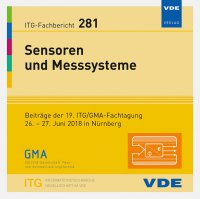Enhancement Techniques to improve Raman spectroscopy of gases
Conference: Sensoren und Messsysteme - 19. ITG/GMA-Fachtagung
06/26/2018 - 06/27/2018 at Nürnberg, Deutschland
Proceedings: Sensoren und Messsysteme
Pages: 3Language: englishTyp: PDF
Personal VDE Members are entitled to a 10% discount on this title
Authors:
Palzer, Stefan (Universidad Autónoma de Madrid (UAM), Escuela Politécnica Superior, c/ Francisco Tomás y Valiente 11, 28049 Madrid, Spain)
Sandfort, Vincenz; Goldschmidt, Jens (Albert-Ludwigs Universität Freiburg, Professur für Gassensoren, Institut für Mikrosystemtechnik (IMTEK), Georges-Köhler-Allee 102, 79110 Freiburg, Germany)
Woellenstein, Juergen (Fraunhofer Institut für Physikalische Messtechnik (IPM), Heidenhofstr. 8, 79110 Frei-burg, Germany & Albert-Ludwigs Universität Freiburg Professur für Gassensoren, Institut für Mikrosystemtechnik (IMTEK), Georges-Köhler-Allee 102, 79110 Freiburg, Germany)
Abstract:
The reliable chemical analysis of gas mixtures is a challenging task that is often approached by employing optical technologies because of their high reliability, sensitivity, and selectivity as well as the possibility of contactless measurement. When monitoring single or a few components of industrial or natural processes, absorption spectroscopy methods are frequently used. However, this approach becomes tedious when many gas species have to be identified and quantified. In this scenario Raman spectroscopy may offer a viable alternative for multi-gas analysis. In particular, spontaneous Raman scattering offers the possibility to qualitatively and quantitatively detect most molecules with a single laser source. Large-scale use of the technique currently fails due to the little amount of Raman-scattered light, which is a result of the small Raman-scattering cross-section. To mitigate this disadvantage, a number of approaches are currently being researched with the goal to obtain larger scattering intensities. To this effect currently popular methods aim to increase the effective amount of light via the use of optical resonators or photonic hollow fibres. In this article, both approaches are presented and the results achieved in natural gas analysis and food chain management are presented.


